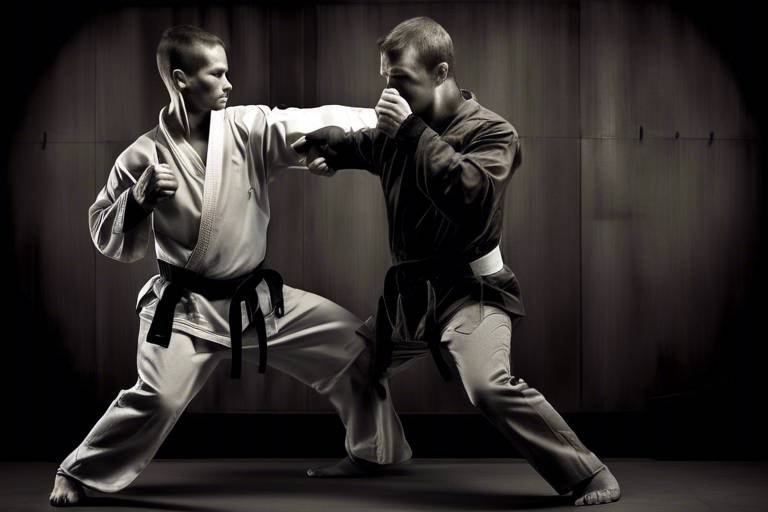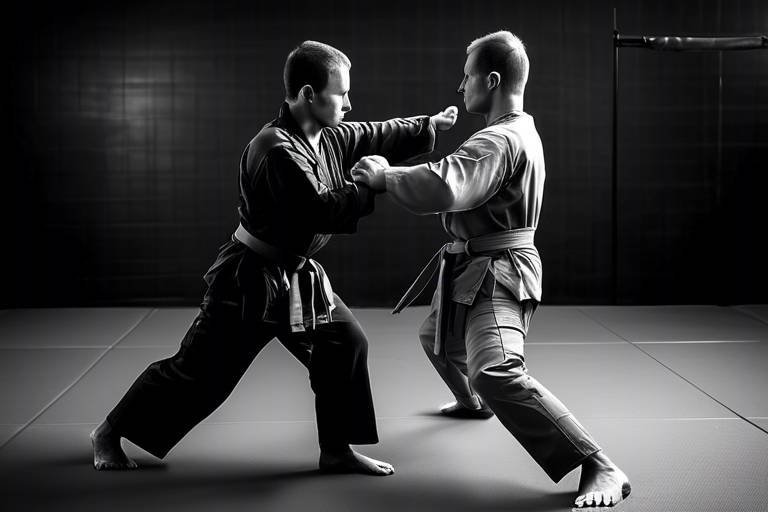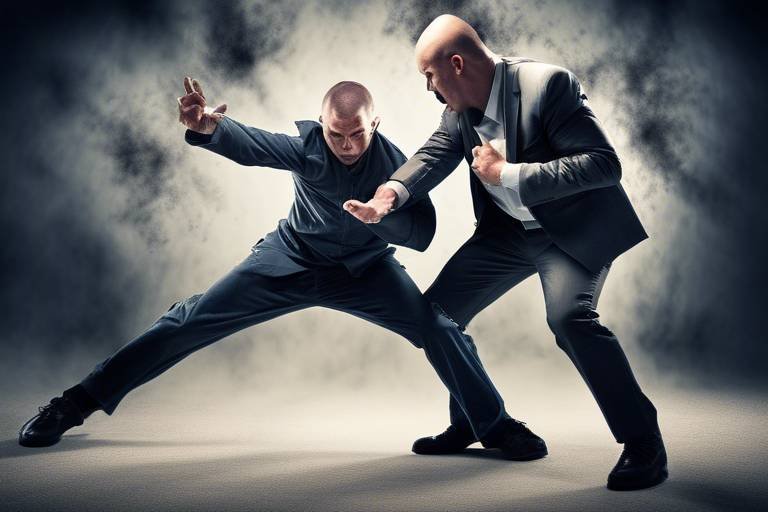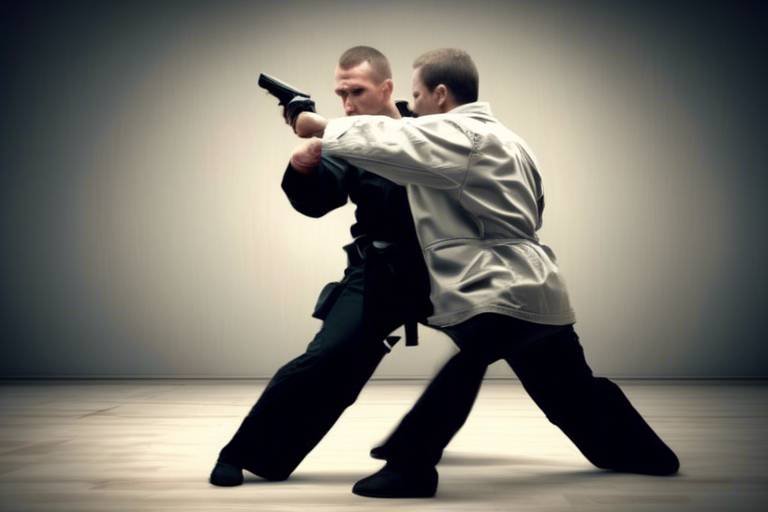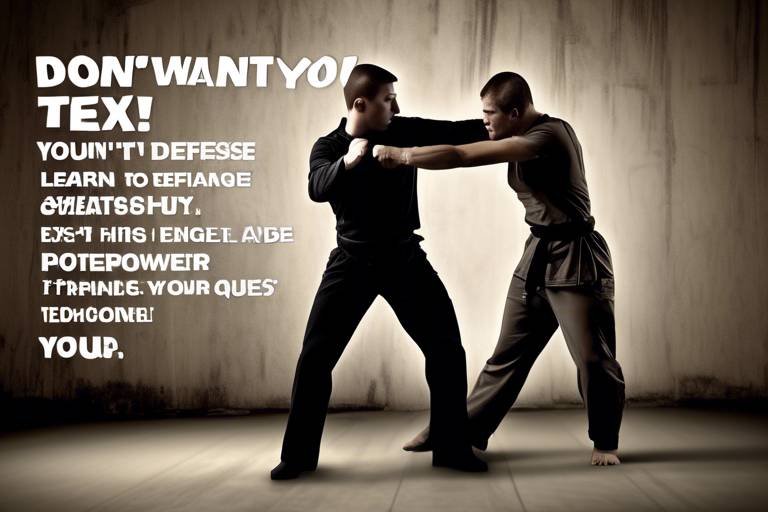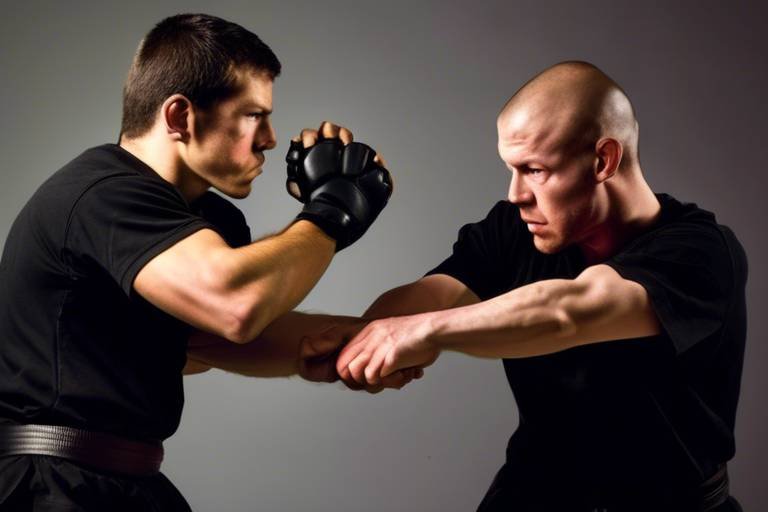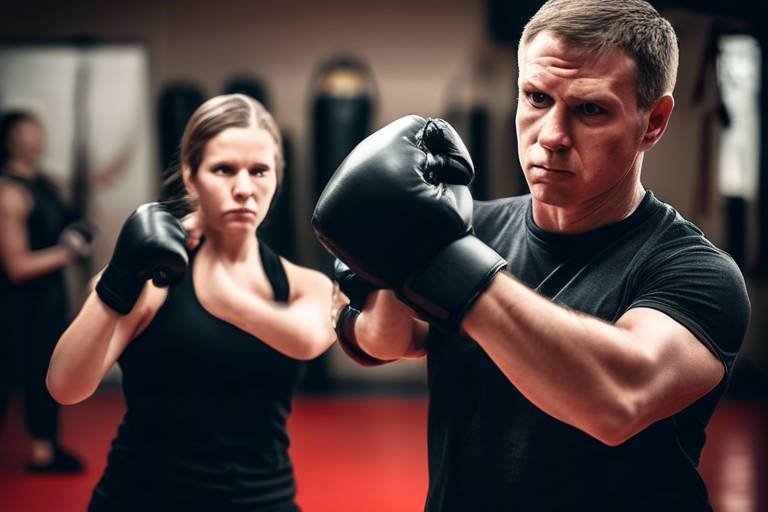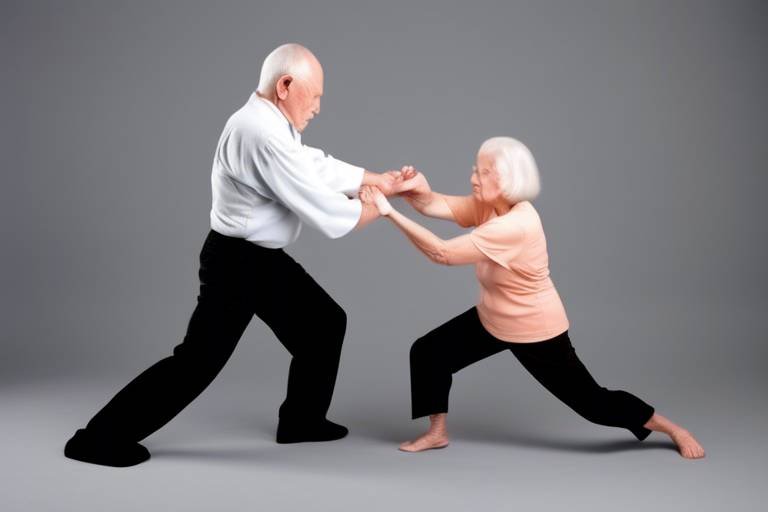Beginner Mistakes to Avoid when Learning Self-Defense Techniques
Learning self-defense is a journey filled with excitement, empowerment, and the promise of safety. However, this journey can also be riddled with common pitfalls that many beginners fall into. These mistakes can hinder your progress and even compromise your safety. In this article, we will explore these pitfalls in detail, providing you with insights on how to navigate through them effectively. Whether you're stepping onto the mat for the first time or revisiting your training, understanding these mistakes will set you up for success in your self-defense journey.
One of the most prevalent mistakes beginners make is skipping the basics. It’s tempting to want to jump straight into advanced techniques, thinking that they’ll make you a better fighter. However, every skilled practitioner knows that without a solid foundation, your skills will crumble like a house of cards. Basic moves, such as stances, footwork, and simple strikes, form the bedrock of your self-defense knowledge. They not only enhance your effectiveness but also ensure your safety during real-life confrontations. Remember, even the most advanced martial artists continuously refine their fundamentals.
Another critical aspect that beginners often overlook is physical conditioning. Think of self-defense as a sport; it requires stamina, strength, and agility. If you neglect your physical fitness, you might find yourself struggling to execute techniques effectively when it matters most. Incorporating a fitness routine that focuses on strength training, flexibility exercises, and cardiovascular conditioning can significantly enhance your performance. A well-rounded fitness program will not only improve your self-defense skills but also boost your confidence and overall well-being.
After learning a few techniques, it’s easy to become overly confident. This sense of overconfidence can lead to dangerous situations. Self-defense is not just about knowing a few moves; it requires continuous practice and a humble acknowledgment of your limitations. Always remember that every encounter is different, and underestimating your opponent can have serious consequences. Keep your ego in check and embrace the learning process. It’s essential to stay grounded and recognize that mastery takes time and dedication.
Self-defense isn't solely about physical prowess; mental preparedness is equally vital. Many beginners fail to prepare psychologically for confrontations, which can significantly hinder their response time and decision-making abilities in high-pressure situations. Visualization techniques, scenario training, and even meditation can help you develop a strong mental framework. By preparing your mind for the unexpected, you equip yourself with the tools to react calmly and effectively when faced with a threat.
Regular practice is the lifeblood of mastering self-defense techniques. Beginners who train sporadically often struggle to retain skills and build confidence. Establishing a consistent training routine is essential for progress. Whether it’s attending classes several times a week or dedicating time to practice at home, consistency will lead to improvement. Consider setting specific training goals and tracking your progress to stay motivated. Just like building muscle, skill acquisition requires regular effort and commitment.
The instructor you choose can make or break your self-defense journey. Selecting an experienced and qualified instructor is crucial for effective learning. Research potential instructors, read reviews, and seek recommendations. Look for those who prioritize safety, proper technique, and realistic training scenarios. A good instructor will not only teach you how to defend yourself but will also instill the importance of respect, discipline, and safety in every practice session.
While mastering techniques is undoubtedly important, many beginners make the mistake of focusing solely on them. Situational awareness and de-escalation strategies are equally crucial in preventing physical confrontations. Learning to read a situation and recognizing potential threats can often help you avoid conflict altogether. Incorporate training that emphasizes awareness and verbal skills alongside your physical techniques. This holistic approach will make you a more well-rounded self-defense practitioner.
Safety should always be the top priority in self-defense training. Beginners sometimes engage in risky practices or partner drills without proper precautions, increasing the likelihood of injury during training sessions. Always use protective gear, practice with care, and communicate openly with your training partners. Remember, the goal is to learn how to defend yourself, not to get hurt in the process. Establishing a culture of safety in your training environment is essential for long-term success.
Setting achievable goals is fundamental for progress in self-defense training. Beginners often aim too high, leading to frustration and discouragement. Instead, focus on establishing realistic milestones that can enhance motivation and skill development. For instance, rather than aiming to master a complex technique in a week, break it down into smaller, manageable goals. Celebrate your progress along the way, and remember that every small step is a victory in your learning journey.
- What is the best way to start learning self-defense? Begin with basic techniques and find a qualified instructor who prioritizes safety and proper training.
- How often should I train? Aim for at least two to three times a week to build and retain your skills.
- Is physical fitness necessary for self-defense? Yes, physical conditioning enhances your ability to execute techniques effectively.
- Can self-defense techniques be learned online? While online resources can be helpful, hands-on training with a qualified instructor is highly recommended.
- What should I do if I feel overwhelmed in training? Communicate with your instructor, take breaks, and remember that learning is a gradual process.

Skipping the Basics
This article explores common pitfalls that beginners face in self-defense training and offers insights on how to avoid them for effective learning and application of self-defense techniques.
When embarking on the journey of self-defense training, one of the most common mistakes that beginners make is . It’s easy to get caught up in the excitement of learning flashy moves and advanced techniques. However, this approach can be detrimental. Just like a house built on sand, your self-defense skills will crumble without a solid foundation. The fundamentals are not just a starting point; they are the bedrock upon which all advanced skills are built.
Understanding basic moves is essential for several reasons. Firstly, these techniques are designed to ensure your safety. They teach you how to respond effectively in real-life situations, where panic can set in and decision-making becomes crucial. Without mastering the basics, you might find yourself in a situation where you can’t recall how to perform a critical maneuver. Imagine trying to ride a bike without first learning how to balance—it’s not just frustrating; it can be dangerous.
Moreover, the basics help improve your muscle memory. When you repeatedly practice fundamental techniques, your body learns to respond instinctively. This is particularly important in self-defense, where split-second reactions can make all the difference. Think of it like learning to play a musical instrument; you wouldn’t jump straight into playing a complex symphony without first mastering scales and chords. Similarly, in self-defense, you need to be comfortable with the basic movements before you can tackle more advanced techniques.
Here are some fundamental techniques that every beginner should focus on:
- Stances: Understanding how to position your body can help you maintain balance and readiness.
- Basic Strikes: Mastering punches, kicks, and elbow strikes is crucial for effective self-defense.
- Defense Mechanisms: Learning how to block or evade attacks can protect you from harm.
- Escapes: Knowing how to escape holds or grabs is vital for your safety.
In conclusion, while it may be tempting to leap into advanced self-defense techniques, remember that mastering the basics is non-negotiable. It’s not just about looking cool or impressing others; it’s about ensuring that you are equipped with the necessary skills to protect yourself. So, take your time, practice diligently, and build a strong foundation. Your future self will thank you for it!
Q1: Why are basic techniques important in self-defense?
A1: Basic techniques provide the foundation for more advanced skills, ensuring safety and effective responses in real-life situations.
Q2: How can I practice basic self-defense techniques at home?
A2: You can practice stances, strikes, and movements in front of a mirror or with a partner to build muscle memory and confidence.
Q3: How long should I focus on the basics before moving on to advanced techniques?
A3: It’s advisable to spend several months mastering the basics before transitioning to more advanced techniques, as this will enhance your overall skill level.

Neglecting Physical Conditioning
When it comes to self-defense, many beginners make the critical mistake of . They often focus solely on learning techniques, believing that knowing the moves is all they need to protect themselves. However, this approach can be likened to trying to build a house without a solid foundation. Just as a shaky base can lead to a crumbling structure, a lack of physical fitness can undermine your ability to execute self-defense techniques effectively.
Physical conditioning encompasses various aspects, including strength, flexibility, and endurance. These elements are not just about looking good or feeling fit; they are essential for the practical application of self-defense techniques. For instance, consider a scenario where you need to escape from a hold or push an assailant away. If your body lacks the necessary strength, you may find yourself struggling to break free. Similarly, flexibility can prevent injuries during training and allow for a greater range of motion, which is crucial for executing techniques properly.
Moreover, endurance plays a pivotal role in self-defense situations. Imagine finding yourself in a confrontation that lasts longer than expected. If you're not physically conditioned, fatigue can set in quickly, impairing your reaction time and decision-making abilities. This could mean the difference between successfully defending yourself and becoming overwhelmed. Therefore, it's vital to incorporate a balanced fitness regimen into your self-defense training.
To help you understand how to integrate physical conditioning into your self-defense practice, consider the following components:
- Strength Training: Engage in weightlifting or bodyweight exercises like push-ups and squats to build muscle.
- Cardio Workouts: Incorporate running, cycling, or swimming to improve your cardiovascular fitness and stamina.
- Flexibility Exercises: Practice yoga or stretching routines to enhance your flexibility and reduce the risk of injury.
In summary, neglecting physical conditioning can severely limit your effectiveness in self-defense scenarios. By prioritizing your fitness, you not only enhance your ability to perform techniques but also boost your confidence in real-life situations. Remember, a well-rounded approach to self-defense training includes both mental and physical preparation, so make sure to invest time in conditioning your body as much as you invest in learning the techniques.
Q: How often should I train for physical conditioning?
A: Ideally, aim for at least 3-4 times a week, incorporating strength, cardio, and flexibility workouts into your routine.
Q: Can I do physical conditioning at home?
A: Absolutely! There are plenty of bodyweight exercises and online resources that can help you stay fit without needing a gym.
Q: Is it necessary to have a personal trainer for physical conditioning?
A: While a personal trainer can provide guidance and motivation, it's not necessary. You can find many effective workout plans online that cater to your fitness level.

Overconfidence in Skills
This article explores common pitfalls that beginners face in self-defense training and offers insights on how to avoid them for effective learning and application of self-defense techniques.
Many beginners overlook fundamental techniques, thinking they can advance quickly. Understanding basic moves is essential for building a solid foundation in self-defense, ensuring safety and effectiveness in real situations.
Physical fitness plays a crucial role in self-defense. Beginners often underestimate the importance of strength, flexibility, and endurance, which can significantly impact their ability to execute techniques effectively.
When stepping into the world of self-defense, it's all too easy for beginners to fall into the trap of overconfidence. After learning a few techniques, they might feel like they can take on any challenge that comes their way. However, this mindset can be incredibly dangerous. It's similar to a novice swimmer who, after mastering a few strokes, believes they can dive into the deep end without any worries. Just like swimming requires continual practice and awareness of one’s limits, self-defense demands humility and consistent training. Overconfidence can lead to underestimating opponents or failing to recognize potential threats, which could result in dire consequences.
Moreover, it's essential to remember that self-defense isn't just about knowing a few moves; it's about understanding the context in which those moves should be applied. Beginners may think they can handle themselves in a confrontation just because they've learned a couple of techniques, but real-life scenarios are often unpredictable. The ability to adapt and respond appropriately is crucial, and this comes with experience and ongoing practice.
To combat overconfidence, beginners should:
- Continuously practice and refine their skills.
- Seek feedback from instructors and peers to identify areas for improvement.
- Engage in sparring or realistic training scenarios to test their skills under pressure.
- Stay humble and recognize that mastery takes time.
Ultimately, while it's great to feel empowered by learning self-defense techniques, maintaining a balanced perspective is key. The journey of self-defense is ongoing, and acknowledging one's limitations is just as important as celebrating progress.
Self-defense isn't just physical; mental readiness is vital. Beginners often fail to prepare psychologically for confrontations, which can hinder their response time and decision-making in high-pressure situations.
Regular practice is key to mastering self-defense techniques. Beginners who train sporadically may struggle to retain skills and confidence, making it essential to establish a consistent training routine.
Selecting an experienced and qualified instructor is crucial for effective learning. Beginners should research and choose instructors who prioritize safety, proper technique, and realistic training scenarios.
While mastering techniques is important, beginners often neglect other crucial aspects like situational awareness and de-escalation strategies, which can prevent physical confrontations in the first place.
Safety should always come first in self-defense training. Beginners sometimes engage in risky practices or partner drills without proper precautions, increasing the likelihood of injury during training sessions.
Setting achievable goals is essential for progress in self-defense training. Beginners often aim too high, leading to frustration and discouragement. Establishing realistic milestones can enhance motivation and skill development.
Q: How can I avoid overconfidence in my self-defense skills?
A: Regular practice, seeking feedback, and engaging in realistic training scenarios can help keep your skills sharp and your confidence in check.
Q: What should I do if I feel overwhelmed during training?
A: It's okay to take a step back. Speak with your instructor about your concerns, and focus on mastering the basics before moving on to more advanced techniques.
Q: Are there mental exercises I can do to prepare for self-defense situations?
A: Yes! Visualization techniques, role-playing scenarios, and mindfulness practices can enhance your mental preparedness for confrontations.

Ignoring Mental Preparedness
When it comes to self-defense, many beginners often overlook a crucial aspect: mental preparedness. It's easy to get caught up in the physical techniques, practicing punches and kicks, but what happens when you're faced with a real confrontation? The reality is that self-defense isn't just about knowing how to throw a punch; it's also about being mentally equipped to handle high-pressure situations. Imagine walking down the street and suddenly finding yourself in a threatening scenario. If you haven't prepared your mind for that moment, all the physical training in the world might not help you react effectively.
Mental preparedness involves several components, including awareness, decision-making, and emotional control. Awareness is about being conscious of your surroundings and recognizing potential threats before they escalate. This means not just focusing on your phone or zoning out while walking. Instead, you should be tuned in to the people and environment around you. Decision-making comes into play when you need to quickly assess a situation and decide on the best course of action, whether that’s to de-escalate, escape, or engage. Lastly, emotional control is vital; staying calm and collected can mean the difference between a successful defense and a panic-induced mistake.
Let’s break down these components further:
- Awareness: Always scan your environment. Look for exits, potential threats, and safe spaces.
- Decision-Making: Practice scenarios in your mind. Ask yourself, "What would I do if…?" This mental rehearsal can help you feel more prepared.
- Emotional Control: Engage in mindfulness practices, such as meditation or deep-breathing exercises, to help manage stress and anxiety.
Many practitioners find it helpful to incorporate mental drills into their training. For example, during a sparring session, take moments to pause and visualize how you would react in a real-life situation. This can help bridge the gap between physical skills and mental readiness. Additionally, consider role-playing scenarios with a partner or instructor. These drills can simulate the stress and unpredictability of a real confrontation, helping you to build confidence and improve your response time.
Ultimately, ignoring mental preparedness can leave you vulnerable, even if you've mastered the physical techniques. It’s essential to view self-defense as a holistic practice that encompasses both the body and the mind. By dedicating time to develop your mental resilience, you’re not just preparing for a fight; you’re equipping yourself with the tools to navigate life’s challenges more effectively.
- Q: How can I improve my mental preparedness for self-defense?
A: Engage in mindfulness practices, visualize scenarios, and participate in role-playing exercises to enhance your decision-making and emotional control. - Q: Why is situational awareness important in self-defense?
A: Being aware of your surroundings allows you to identify potential threats early and take proactive measures to avoid dangerous situations. - Q: Can I practice mental preparedness without a partner?
A: Yes! You can visualize scenarios, practice breathing techniques, and engage in self-reflection to enhance your mental readiness.

Inconsistent Training
When it comes to learning self-defense, one of the most common mistakes beginners make is . Picture this: you're excited to learn a new skill, but life gets in the way. Maybe you skip a week or two of practice, thinking you can just pick up where you left off. Unfortunately, this approach can be detrimental to your progress. Just like learning a musical instrument, if you don't practice regularly, you won't master the notes, and your confidence will plummet.
In self-defense, consistency is key. Without regular practice, techniques can become rusty, and your muscle memory won't develop as it should. Imagine trying to ride a bike after months of not doing it—your balance would be off, and you'd likely wobble all over the place. The same goes for self-defense techniques. If you train sporadically, you risk not only losing your skills but also your ability to react effectively in a real-life situation.
To combat this, it's essential to establish a training routine that fits your lifestyle. Here are some tips to help you stay consistent:
- Set a Schedule: Carve out specific days and times for your training sessions, treating them like important appointments.
- Find a Training Buddy: Partnering with someone can keep you accountable and make practice more enjoyable.
- Mix It Up: Keep your training fresh by incorporating different techniques or styles to maintain your interest.
Moreover, it's not just about the frequency of training but also the quality. Make sure that each session is focused and productive. If you're going to dedicate time to training, ensure that you're maximizing that time. Consider recording your sessions or asking for feedback from your instructor to track your progress and identify areas for improvement.
Ultimately, the journey of mastering self-defense techniques is a marathon, not a sprint. Embrace the process and remember that every little bit of practice contributes to your overall skill level. By committing to a consistent training regimen, you'll not only build your techniques but also your confidence and readiness to face any situation that comes your way.
Q: How often should I train to be effective in self-defense?
A: Ideally, aim for at least 2-3 times a week. Consistency is more important than intensity, so find a schedule that works for you.
Q: What if I miss a training session?
A: Don't stress! Life happens. Just try to get back on track as soon as possible and stick to your routine moving forward.
Q: Can I practice self-defense techniques at home?
A: Absolutely! Many techniques can be practiced solo or with a partner at home. Just be sure to focus on form and safety.
Q: Is it necessary to train with an instructor?
A: While self-study can be beneficial, training with a qualified instructor ensures that you're learning proper techniques and safety measures.

Choosing the Wrong Instructor
This article explores common pitfalls that beginners face in self-defense training and offers insights on how to avoid them for effective learning and application of self-defense techniques.
When it comes to learning self-defense, the choice of instructor can be a game-changer. Imagine stepping into a dojo filled with energy, anticipation, and a sense of empowerment. However, if you find yourself under the guidance of an inexperienced or poorly qualified instructor, that excitement can quickly turn into confusion and frustration. can lead to a host of problems, including improper technique, lack of safety protocols, and even a negative training environment.
One of the primary reasons beginners often pick the wrong instructor is simply a lack of research. Many people might walk into the first class they find, thinking that all self-defense instructors are created equal. This assumption couldn't be further from the truth. It's crucial to investigate an instructor's background, experience, and teaching style before committing to a class. For instance, ask yourself:
- What are their qualifications and certifications?
- How long have they been teaching self-defense?
- Do they have experience in real-life self-defense situations?
- What do other students say about their teaching methods?
Another common pitfall is failing to assess the instructor's teaching philosophy. Some instructors may focus solely on flashy techniques that look good but aren't practical. Others might neglect the importance of safety and proper warm-ups, leading to injuries during training. A good instructor should emphasize realistic training scenarios while also ensuring that safety measures are in place. They should encourage students to ask questions and foster an environment where everyone feels comfortable. After all, self-defense training is not just about learning to fight; it's about building confidence and awareness.
Moreover, consider the instructor's ability to communicate effectively. A great instructor is not only skilled in self-defense techniques but also knows how to convey that knowledge in an understandable way. If you find yourself confused or overwhelmed by their instructions, it might be time to look for someone else. Effective communication can make all the difference in your learning experience.
In addition to these factors, it’s essential to observe a class before joining. Pay attention to how the instructor interacts with students. Are they encouraging? Do they provide constructive feedback? A supportive atmosphere can significantly enhance your learning experience. If you notice a lack of engagement or a negative attitude, it might be a red flag.
Lastly, don't underestimate the importance of personal compatibility. Every instructor has a unique style, and what works for one person might not work for another. Trust your instincts—if you feel uncomfortable or not aligned with the instructor's approach, it’s okay to seek out someone who resonates better with you. After all, self-defense is a personal journey, and you want to ensure that your instructor is someone who will support and guide you along the way.
In summary, choosing the right instructor is crucial for your self-defense training. Take the time to research, observe classes, and assess compatibility. By doing so, you’ll set yourself up for a more enriching and effective learning experience that will empower you in real-life situations. Remember, the right instructor can be the difference between feeling vulnerable and feeling strong and capable.
Q: How can I find a qualified self-defense instructor?
A: Start by researching local martial arts schools, reading reviews, and asking for recommendations from friends or online communities. Look for instructors with recognized certifications and experience in self-defense.
Q: What should I expect in my first self-defense class?
A: Your first class will likely include introductions, an overview of the training, and some basic techniques. Don't hesitate to ask questions and communicate any concerns you may have.
Q: Is it necessary to have previous martial arts experience before starting self-defense training?
A: No, previous experience is not required. Self-defense classes are designed for beginners and will start with the fundamentals.
Q: How often should I train to see improvement in my self-defense skills?
A: Consistency is key! Aim for at least two to three classes a week, along with some practice at home to reinforce what you've learned.

Focusing Solely on Techniques
When diving into the world of self-defense, it's all too easy for beginners to become enamored with the flashy techniques they see in movies or during intense training sessions. They might think, "If I can just master this one move, I'll be invincible!" However, this mindset can be quite misleading and potentially dangerous. While mastering techniques is undoubtedly important, focusing solely on them can lead to a significant oversight of other critical aspects of self-defense.
Imagine you're learning to drive. Sure, knowing how to steer, accelerate, and brake is essential, but if you ignore the rules of the road, traffic signs, and the importance of being aware of your surroundings, you're putting yourself and others at risk. Similarly, in self-defense, understanding the context in which techniques are applied is just as crucial as the techniques themselves.
One major component that often gets overlooked is situational awareness. This means being aware of your environment and recognizing potential threats before they escalate into a confrontation. For instance, are there exits nearby? Are there people around who could help? What’s the demeanor of the person approaching you? These questions are vital for assessing a situation and deciding whether to engage or escape. Without this awareness, even the most skilled fighter can find themselves in a precarious position.
Moreover, another essential aspect is de-escalation strategies. Not every situation requires physical confrontation. Sometimes, the best form of self-defense is to diffuse a situation verbally or to remove yourself from it entirely. Techniques such as maintaining a calm demeanor, using non-threatening body language, and employing verbal skills can often prevent a conflict from escalating. If a beginner neglects these strategies and only focuses on physical techniques, they may find themselves in situations that could have been avoided altogether.
To illustrate the importance of a well-rounded approach, consider this table that highlights the various components of self-defense training:
| Component | Description |
|---|---|
| Techniques | Physical moves and maneuvers used to defend oneself. |
| Situational Awareness | The ability to perceive and assess your environment for potential threats. |
| De-escalation | Strategies to calm a situation and avoid physical confrontation. |
| Physical Conditioning | Strength, flexibility, and endurance to execute techniques effectively. |
| Mental Preparedness | Being psychologically ready to respond to confrontations. |
In conclusion, while it may be tempting to dive headfirst into mastering techniques, it's crucial to adopt a holistic view of self-defense. By integrating situational awareness and de-escalation strategies into your training, you will not only enhance your skills but also significantly increase your chances of staying safe in real-life scenarios. Remember, self-defense is not just about fighting; it's about being prepared, aware, and ready to respond appropriately in any situation.
Q: What should I prioritize when starting self-defense training?
A: Focus on a balanced approach that includes techniques, situational awareness, and de-escalation strategies.
Q: Can I learn self-defense without physical training?
A: While physical training is important, understanding situational awareness and de-escalation techniques can be equally beneficial.
Q: How often should I practice self-defense techniques?
A: Consistency is key. Aim for regular practice to reinforce your skills and maintain your confidence.
Q: Is it necessary to have a qualified instructor?
A: Yes, a qualified instructor can provide essential guidance, ensure safety, and help you develop effective techniques.

Disregarding Personal Safety
When it comes to self-defense training, personal safety should always be the top priority. It's astonishing how many beginners throw caution to the wind, diving headfirst into drills without considering the potential risks involved. Imagine going to a swimming pool without checking if the water is safe—sounds reckless, right? The same principle applies to self-defense training.
Often, beginners engage in partner drills or sparring sessions that can become risky without proper precautions. This can lead to injuries that not only hinder your training but can also deter you from continuing your self-defense journey. It’s essential to establish a safe training environment by following some basic safety protocols. For instance, always wear appropriate protective gear, like gloves and mouthguards, especially during sparring. Additionally, ensure that the training area is free of hazards, such as uneven surfaces or obstacles that could lead to accidents.
Furthermore, it's crucial to communicate with your training partners about your comfort levels and any physical limitations you may have. Clear communication can significantly reduce the risk of injury during practice. Set boundaries and agree on the intensity of the drills beforehand. This way, everyone involved knows what to expect, and you can train safely while still pushing your limits.
Another aspect of personal safety is understanding your body and respecting its signals. If you feel pain or discomfort during training, it's vital to listen to those signals rather than pushing through them. Remember, your goal is to enhance your skills, not to sustain injuries that could sideline you for weeks or even months. Taking care of your body is as important as mastering the techniques themselves.
Lastly, consider the importance of a supportive training community. Surrounding yourself with experienced practitioners who emphasize safety can make a world of difference. They can offer valuable insights and tips on how to train effectively while minimizing risks. So, don't hesitate to ask questions and seek advice from those who have been in your shoes.
In summary, disregarding personal safety in self-defense training is a mistake that can have serious consequences. By prioritizing safety, communicating effectively, and respecting your body’s limits, you can create a positive training environment that fosters growth and confidence in your self-defense abilities. Remember, it's not just about learning to defend yourself; it's also about doing so in a way that keeps you safe and healthy.
- What should I wear during self-defense training? It's recommended to wear comfortable clothing and protective gear, such as gloves and mouthguards, to prevent injuries.
- How can I find a safe training environment? Look for established self-defense schools or clubs that prioritize safety and have a good reputation.
- What should I do if I feel pain during training? Always listen to your body. If you feel pain, stop the activity and assess the situation. Don't push through discomfort.
- Can I practice self-defense techniques alone? While some techniques can be practiced solo, it's best to train with a partner or instructor to ensure proper form and safety.

Failing to Set Realistic Goals
This article explores common pitfalls that beginners face in self-defense training and offers insights on how to avoid them for effective learning and application of self-defense techniques.
Many beginners overlook fundamental techniques, thinking they can advance quickly. Understanding basic moves is essential for building a solid foundation in self-defense, ensuring safety and effectiveness in real situations.
Physical fitness plays a crucial role in self-defense. Beginners often underestimate the importance of strength, flexibility, and endurance, which can significantly impact their ability to execute techniques effectively.
New practitioners may develop overconfidence after learning a few techniques. This mindset can lead to dangerous situations, as self-defense requires continuous practice and humility to recognize one's limitations.
Self-defense isn't just physical; mental readiness is vital. Beginners often fail to prepare psychologically for confrontations, which can hinder their response time and decision-making in high-pressure situations.
Regular practice is key to mastering self-defense techniques. Beginners who train sporadically may struggle to retain skills and confidence, making it essential to establish a consistent training routine.
Selecting an experienced and qualified instructor is crucial for effective learning. Beginners should research and choose instructors who prioritize safety, proper technique, and realistic training scenarios.
While mastering techniques is important, beginners often neglect other crucial aspects like situational awareness and de-escalation strategies, which can prevent physical confrontations in the first place.
Safety should always come first in self-defense training. Beginners sometimes engage in risky practices or partner drills without proper precautions, increasing the likelihood of injury during training sessions.
Setting achievable goals is essential for progress in self-defense training. Beginners often aim too high, leading to frustration and discouragement. It's like trying to run a marathon after just a week of jogging; unrealistic expectations can set you up for failure. Instead, consider breaking your training into manageable milestones. For instance, instead of aiming to master all techniques in a month, focus on perfecting one technique at a time.
Establishing realistic goals not only enhances motivation but also builds confidence. By setting small, attainable objectives, you can track your progress and celebrate your achievements along the way. Here are some examples of realistic goals you might consider:
- Mastering a single self-defense technique each week.
- Improving your physical conditioning by incorporating strength training twice a week.
- Participating in a self-defense class consistently for three months.
By transforming lofty aspirations into small, actionable steps, you create a roadmap for success. Remember, self-defense is a journey, and every little victory counts. So, take a deep breath, set those realistic goals, and enjoy the process of becoming more skilled and confident in your abilities.
Q: How often should I practice self-defense techniques?
A: Consistency is key. Aim for at least two to three training sessions per week to retain and improve your skills.
Q: What should I look for in a self-defense instructor?
A: Look for someone who has experience in teaching self-defense, prioritizes safety, and creates realistic training scenarios.
Q: How can I mentally prepare for a self-defense situation?
A: Engage in visualization techniques, practice mindfulness, and participate in scenario-based training to enhance your mental readiness.
Q: Is physical conditioning really that important?
A: Absolutely! Being physically fit can significantly enhance your ability to execute techniques effectively and respond to threats.
Frequently Asked Questions
- What are the basic techniques I should learn first in self-defense?
Starting with basic techniques like stances, footwork, and simple strikes is crucial. These fundamentals build your confidence and create a solid foundation for more advanced moves.
- How important is physical conditioning for self-defense?
Physical conditioning is extremely important! Strength, flexibility, and endurance help you execute techniques effectively and maintain stamina during a confrontation. Think of it as the engine that powers your self-defense skills.
- Can overconfidence be dangerous in self-defense training?
Absolutely! Overconfidence can lead to underestimating threats and neglecting practice. Remember, self-defense is about being prepared and aware of your limitations to stay safe.
- Why is mental preparedness essential in self-defense?
Mental preparedness helps you stay calm and focused during a confrontation. If you're not psychologically ready, you might freeze or react poorly when it matters most. It's like training your mind as much as your body!
- How often should I train to be effective in self-defense?
Consistency is key! Training regularly, ideally several times a week, helps reinforce your skills and builds muscle memory. Think of it like watering a plant; regular care leads to growth!
- What should I look for in a self-defense instructor?
Choose an instructor with experience, good credentials, and a focus on safety. Look for someone who emphasizes proper techniques and realistic training scenarios to ensure you learn effectively.
- Are techniques the only thing I need to focus on in self-defense?
No way! While techniques are important, you should also work on situational awareness and de-escalation strategies. These skills can prevent a confrontation before it even starts!
- How can I ensure my safety during training?
Always prioritize safety! Use proper gear, communicate with your partner, and avoid risky practices. Remember, the goal is to learn, not to get hurt!
- What are realistic goals for a beginner in self-defense?
Set achievable goals like mastering a few basic techniques or improving your fitness level. These milestones will keep you motivated and help you track your progress without feeling overwhelmed.




